Cha om, also known as Acacia leaves in English, comes from the acacia pennata plant, a small shrub native to Southeast Asia. Learn how to use these nutritious leaves and how they're used in Thai recipes!
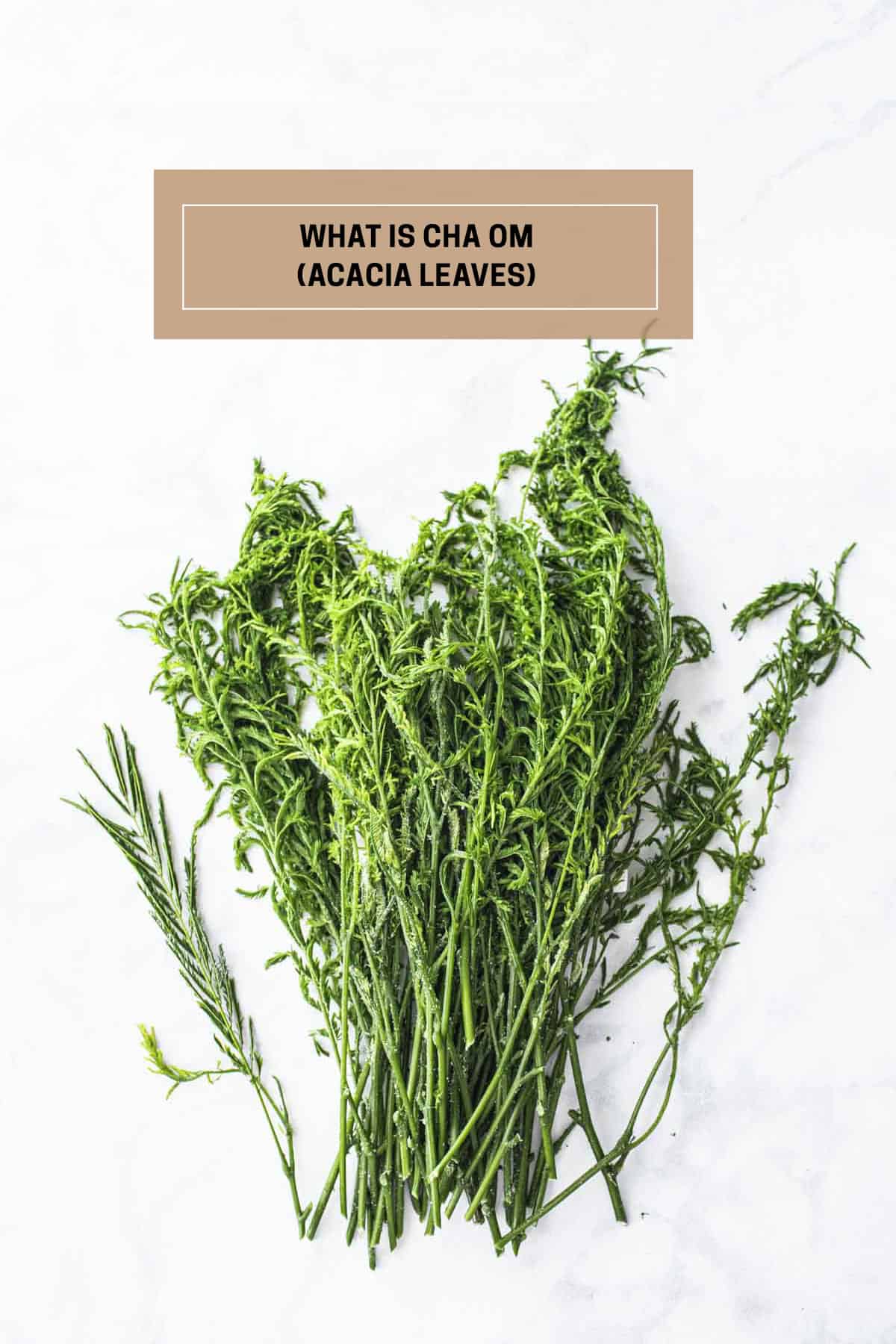
Recipes using Cha Om are Thai Cha Om Omelette and Gaeng Som with Fish. Add the omelette squares to Thai papaya curry or brothy soups like Jungle curry.
With woody stalks and nasty thorns, it's recognized for its stinky leaves and pungent odor. The young leaves of this fast-growing shrub are tender, making them a culinary delight in various Southeast Asian cuisines.
Jump to:
- What is Cha Om (Acacia Leaves)?
- Cha Om in Thai Cooking
- Thai recipes using Cha Om
- Fresh Cha-Om vs. Frozen Cha-Om
- How to prepare Cha Om leaves for cooking
- How to reduce the smell of Acacia leaves before cooking
- Top Tips!
- Why is Cha Om Stinky?
- Health Benefits of Cha Om
- Can you eat cha-om raw?
- Where can I buy Cha Om
- What can I substitute instead of Cha Om?
- Fun facts
- Frequently Asked Questions
- What is Cha Om (Acacia Leaves)
- Related Recipes You'll Love
What is Cha Om (Acacia Leaves)?

Cha om, also known as Acacia leaves (Senegalia Pennata), comes from the acacia pennata plant, a small shrub native to Southeast Asia. With woody stalks and nasty thorns, it's recognized for its stinky leaves and pungent odor.
The young leaves of this fast-growing shrub are tender, making them a culinary delight in various Southeast Asian cuisines.
Cha Om in Thai Cooking
Cha om is a special ingredient in Thai cooking. It's used in dishes like Cha Om Omelette, commonly found in Thai restaurants. The omelette is cut into patties, square or rectangular shape.
They are used to add to Thai sour curry, known as 'kaeng som.'
The leaves are also used in recipes like 'Jeow Cha' (dipping sauce) and 'Nam Prik' (spicy chili paste), adding a unique flavor.
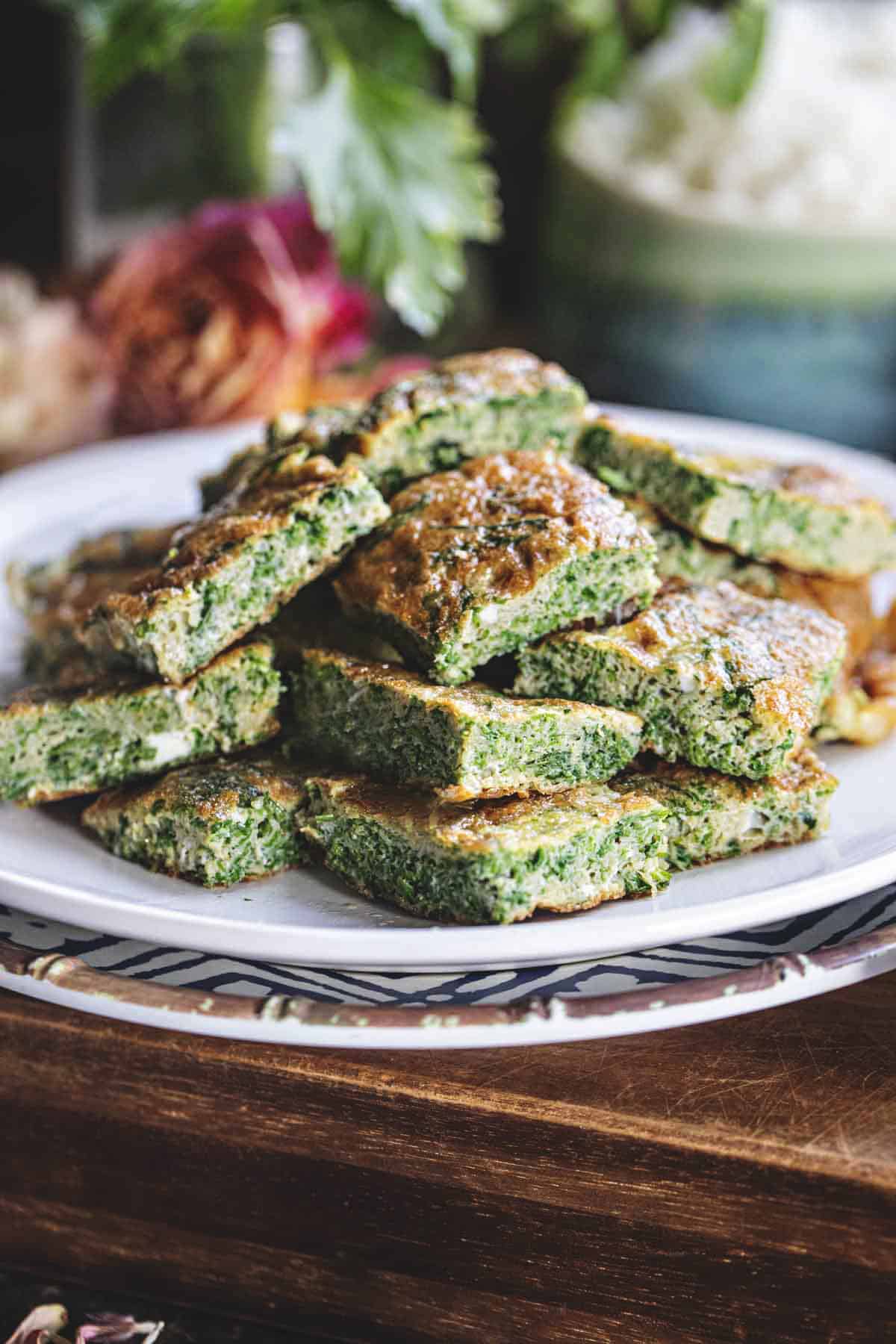
Thai recipes using Cha Om
These lesser-known Thai recipes use Acacia leaves. If you get a chance to see these dishes, make sure to give them a try, as they are not readily available in the West.
- Nam Prik Pla Tu. A Thai spicy dipping sauce made with shrimp paste, fried mackerel, tuna fish, and steamed vegetables.
- Gaeng Som SeafoodThai Sour Curry Soup with Fish and Shrimp (Kaeng Som). The omelette pieces can be used in soups and curries like Thai Papaya curry and many Thai soups.
- Use the leaves and omelet to add crunch and texture to Thai jungle curry.
- This one is not particularly Thai but is another way of using the leaves to add nutrients to your dishes. Use the leaves to make fritters by adding tapioca, rice flour, and seasoning.
Fresh Cha-Om vs. Frozen Cha-Om

Fresh vegetables are always better than frozen in cans or jars. However, Cha Om grows in tropical climates, which is not often used in Western cuisine.
Fresh Cha Om are less stinky than frozen ones. Frozen Cha Om, after thawing, loses a lot of their ability to hold in the freshness and make the leaves more potent in smell.
Use thawed-out leaves as soon as possible, or your house, kitchen, refrigerator, and even garbage will reak a very unpleasant smell.
How to prepare Cha Om leaves for cooking
Be careful when handling Cha Om leaves because they have really sharp thorns that can poke your fingers. The thorns are hidden among the green stems, making them difficult to see.
Take a good look before touching the leaves. The fresh leaves have stronger and sharper thorns than frozen ones, as the freezing and thawing process weakens the thorns.
These thorns protect the plants from bugs, insects, animals, and even people!
To use the leaves of the Acacia plant, use only the delicate leaves and the tender parts at the top of the stems. They are easily pinched off with your fingers, leaving the tough ones out.
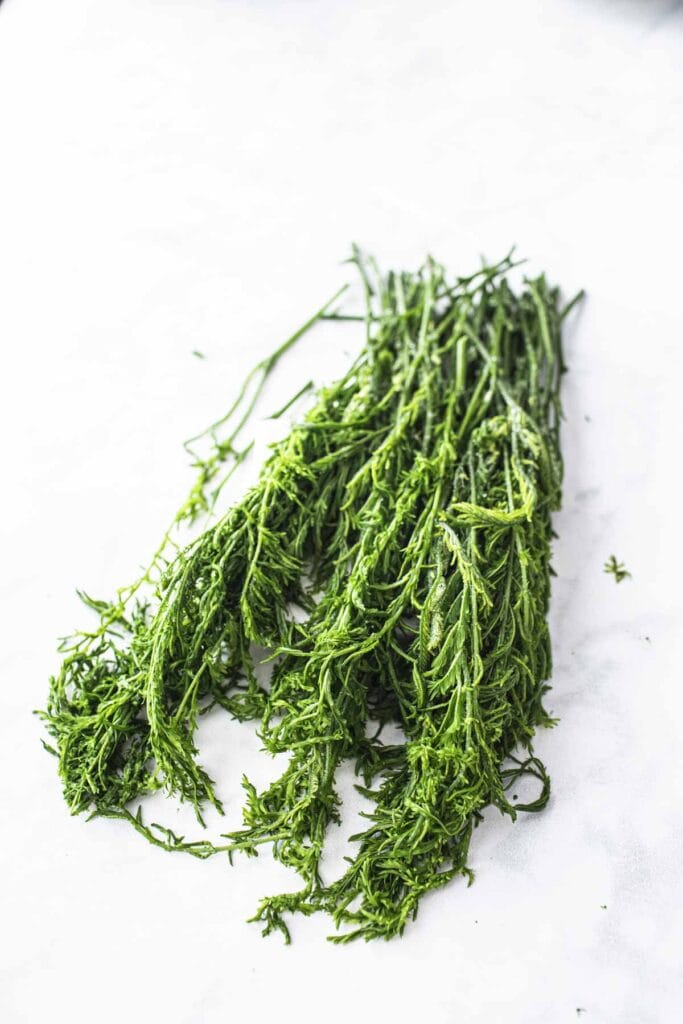
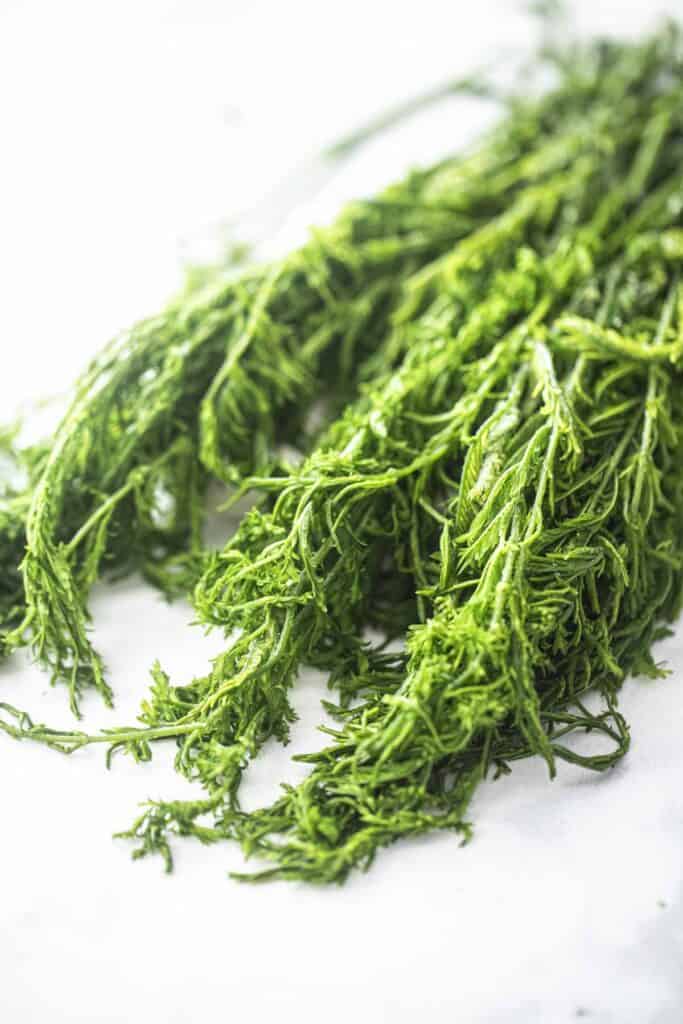
How to reduce the smell of Acacia leaves before cooking
As mentioned, Acacia leaves have a potent smell to them. To help reduce some of the smell, soak the leaves in a bowl with water, then cover the bowl with a plate to retain the smell within the bowl.
Top Tips!
Here are some kitchen tricks I use to deal with the strong smell of Cha Om. I choose one or two aromatic herbs and soak them with the Cha Om, depending on the recipe.
This infuses the leaves with the same flavors I'll use in my dish.
- I like to smash the herbs to release their oils for an extra fragrance boost.
- For example, I smash garlic cloves and soak them in a water bowl with the Cha Om. If I'm making Gaeng Som, I do the same with Kra Chai. I use those if my curries or soups call for shallots or onions.
- You can also try other aromatics like Kaffir lime leaves, lemongrass, galangal, ginger, chives, or cilantro to help mask the smell. Read more about Thai herbs here.
- Don't be afraid to use your favorite spices if your recipes call for them!
These are just my personal tips to tackle the pungent aroma of Cha Om. Feel free to experiment and find what works for you!
Why is Cha Om Stinky?
Acacia leaves, also known as Cha Om, are notorious for their strong odor, earning them the nickname "stinky leaf vegetable." Nevertheless, this pungent smell miraculously disappears when they are cooked and incorporated into recipes.
It's like witnessing a magic trick! Much like fish sauce and Pla Ra sauces! (Read about these Thai sauces here.)
Health Benefits of Cha Om
Cha om not only tastes great, but it's also good for your health! These tender leaves are packed with vitamin C, essential for a well-balanced diet.
So, not only does cha om add flavor to Southeast Asian dishes, but it also boosts your nutrition. Enjoy the benefits of this nutritious and delicious.
Cha Om is rich in essential nutrients such as vitamins A and C, calcium, iron, and fiber. These nutrients play a crucial role in maintaining overall health and well-being.
Additionally, Cha Om is known for its high antioxidant content, which helps protect the body against free radicals and reduces the risk of chronic diseases.
Antioxidants also support a healthy immune system and promote healthy aging. Read more about Cha Om here-Cha Om-Senegalia Pennata.
Can you eat cha-om raw?
Sure, you totally can! But, to be honest, I'm not so sure you should. The scent of the leaves is, well, just say it's not the most pleasant.
If you're a big fan of raw veggies, just be extra careful. Make sure you have your toothbrush, mouthwash, and some mints on standby for a quick post-meal freshen-up.
Oh, and maybe hold off on smooching for a little while afterward! (;
Where can I buy Cha Om
YOu can buy Cha-Om at most Asian markets. When it is season, they are found in the produce section. Frozen Acacia can be found all year round!
What can I substitute instead of Cha Om?
There's no substitute for Cha Om. It's a unique Southeast Asian plant with a distinctive texture and smell. To make authentic Thai recipes using this particular ingredient.
You'll need to go on an adventure to the Asian market! Bring images from this post for a visual reference. (:
Fun facts
Cha Om plants were common in the village where I grew up in Isaan, Thailand. People usually overlooked them until someone in our family wanted to make soups, curries, or stir-fries with fresh leaves.
When those times came, we would go to one of the plants, pick the leaves by hand, wash them, and use them immediately for our meals!
It's amazing to see how differently Cha Om is sold and used in America compared to how it's ignored in Thailand.
Frequently Asked Questions
Cha-om in English refers to Acacia leaves, derived from the acacia pennata plant, a small shrub native to Southeast Asia.
Cha-om has a unique taste characterized by its pungent odor. The flavor profile adds a distinctive element to Thai dishes.
Cha-om is rich in vitamin C and is valued for its potential health benefits. It is a nutritious addition to various Southeast Asian cuisines.
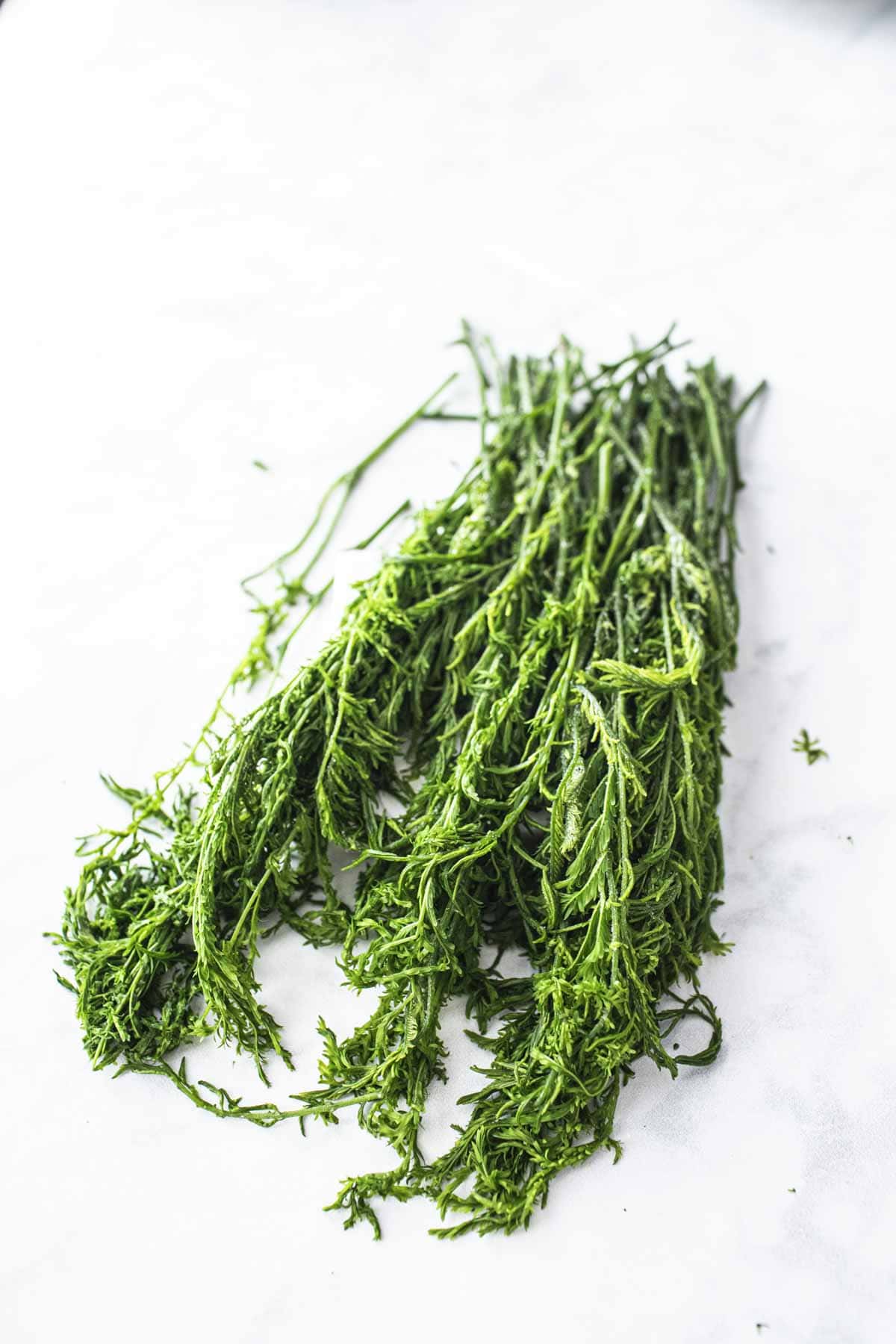
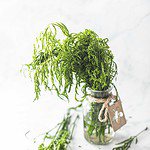
What is Cha Om (Acacia Leaves)
- Total Time: 2 minutes
- Yield: 1 cup 1x
- Diet: Low Calorie
Description
Cha om, also known as Acacia leaves in English, comes from the acacia pennata plant, a small shrub native to Southeast Asia. Learn how to use these nutritious leaves and how they're used in Thai recipes!
Ingredients
- 1 large bunch of Cha Om. Fresh or frozen
Instructions
- To use the leaves of the Acacia plant, use only the delicate leaves and the tender parts at the top of the stems. They are easily pinched off with your fingers, leaving the tough ones out.
- Be careful when handling Cha Om leaves because sharp thorns can poke your fingers. The thorns are hidden among the green stems, making them difficult to see.
- Take a good look before touching the leaves. The fresh leaves have stronger and sharper thorns than frozen ones, as the freezing and thawing process weakens the thorns.
Notes
How to reduce the smell of Acacia leaves before cooking
- Acacia leaves have a potent smell to them. To help reduce some of the smell, soak the leaves in a bowl with water, then cover the bowl with a plate to retain the smell within the bowl.
- Here are some top kitchen tricks I use to deal with the strong smell of Cha Om. I choose one or two aromatic herbs and soak them with the Cha Om, depending on the recipe. This infuses the leaves with the same flavors I'll use in my dish.
- I like to smash the herbs to release their oils for an extra fragrance boost.
- For example, I smash garlic cloves and soak them in a water bowl with the Cha Om. If I'm making Gaeng Som, I do the same with Kra Chai. I use those if my curries or soups call for shallots or onions.
- You can also try other aromatics like Kaffir lime leaves, lemongrass, galangal, ginger, chives, or cilantro to help mask the smell. Read more about Thai herbs here.
- Don't be afraid to use your favorite spices if your recipes call for them!
These are just my personal tips to tackle the pungent aroma of Cha Om. Feel free to experiment and find what works for you!
- Prep Time: 2 minutes
- Cook Time: none
- Category: Thai cooking Tips
- Method: no cooking
- Cuisine: Thai
** Thank you so much for visiting my blog! This is truly a passion for me. If you have enjoyed these recipes and appreciate the hard work I put into them, I would love it if you would share them with your friends! Your recommendation is the highest review I could hope for, and I’d appreciate it! **
Related Recipes You'll Love
Looking for other recipes like this? Try these:


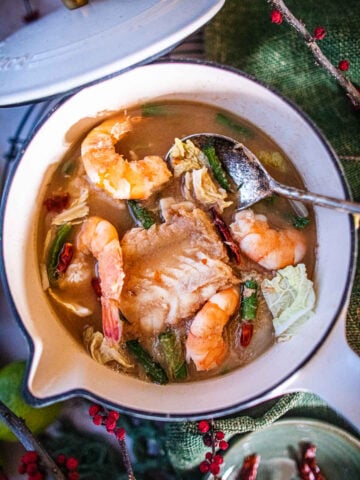

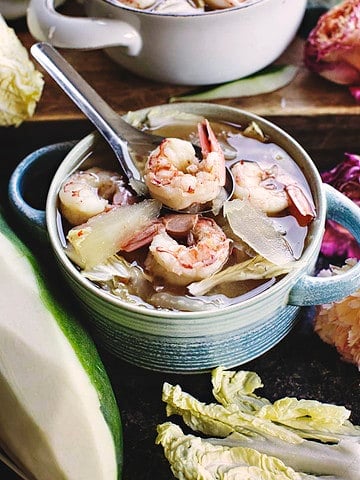
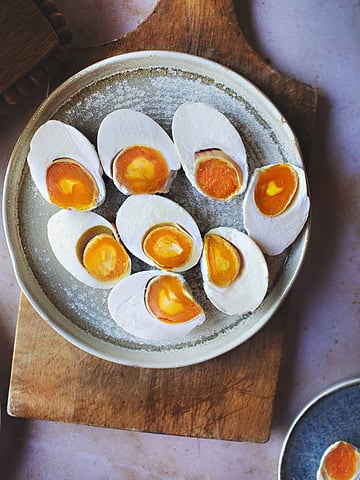


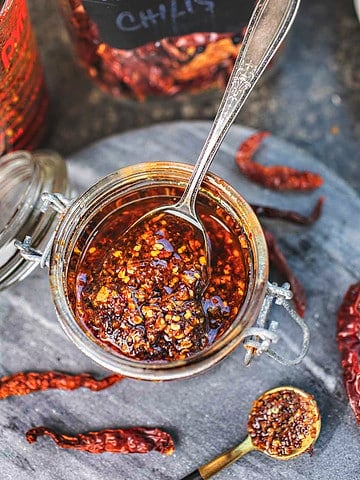
Paul K says
Thanks for all the great tips on using this aromatic!!! I had no idea of the additional health benefits for immunity and free radicals. And it is really magic how the bad smell just disappears. Amazing ideas:)